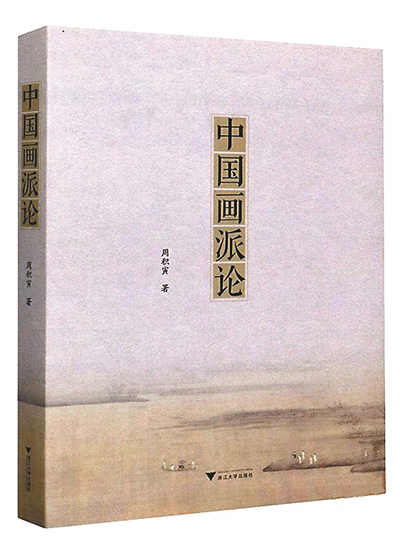Schools of traditional Chinese painting

A Study of Schools of Traditional Chinese Painting
A Study of Schools of Traditional Chinese Painting, written by Zhou Jiyin, a professor with Nanjing University of the Arts, presents his 50-odd years of systematic thinking about traditional Chinese painting schools.
Zhou has contributed the most in terms of concept definition, connotation standards, and stylistic inheritance studies of Chinese painting schools, forming a rigorous and complete academic framework and theoretical system.
The school of Chinese painting dates back to the Tang Dynasty (618–907), and since then subsequent generations have formed a great many painting schools with various styles, especially in the Ming (1368–1644) and Qing (1644–1911) dynasties. The term “schools of paintings” first appeared in Dong Qichang’s anthology in the late Ming Dynasty, yet without elaborating on its generation and evolution.
Zhou argues that most names of painting schools in Chinese history have been summed up by later scholars. As a serious academic topic, some of them have already come to a final conclusion, while some are still in dispute, such as the distinction between the “Eight Eccentrics of Yangzhou” and the “Yangzhou” school, as well as “Jinling Bajia”[Eight Masters of Nanjing] that cannot be oversimplified as the “Jinling” school.
Most painting schools in Chinese history were shaped not consciously, but spontaneously. In most cases, one or several influential painters directly or indirectly influenced painters around them, gradually forming a group of painters with similar aesthetic pursuits, painting styles, and creative techniques.
The author clearly states that the formation of a painting school must meet three basic requirements: a pioneer first, a group of painters passing on the genre of the pioneer, and similar painting styles. This is a view universally accepted by the art history circle and taken by them as the foundation of painting school studies.
At the end of the 20th century, various localities, in order to polish up regional cultural brands and lift their cultural influence, began to artificially forge painting schools. As such, local painting schools sprang up one after another. Although many were formed spontaneously, the majority were consciously established for commercial exploitation.
In response to this phenomenon, Zhou gives his view that painting schools are better when not created consciously. Shaping painting schools for commercial exploitation goes against not only the inheritance and innovation of fine traditional Chinese culture, but also against the prosperity and development of contemporary art. The artificial creation of painting schools usually fails to form a painting genre in the true sense, and, at the same time, restricts painters’ creation vision and artistic creativity.
Jia Feng is an assistant research fellow from the Institute of Culture at the Ningxia Academy of Social Sciences.